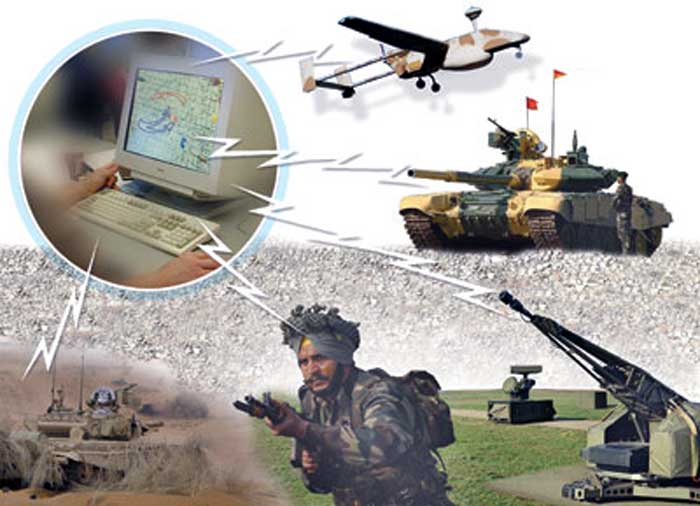Over the years, national security issues have gained in importance and face constant and detailed scrutiny from a wide variety of practitioners, researchers, analysts and journalists. This is indeed an excellent development as it keeps the government and its security establishment, including the military, on its toes.
It is no secret that they tend to use secrecy as a cover to hide their interminable turf battles and their ineptness and lack of clarity when things go wrong. The imbroglio in Eastern Ladakhis a good example of this phenomenon, where reasoned debate remains stymied for the most part by lack of verifiable information.
While examination of past events allows for a forensic audit and subsequent corrective measures, what is equally important is the necessity into look to the future. Especially, how wars will be fought and won. Not only are we in the midst of a “clash of civilisations” that is upending existing geo-political equations, but we also face the challenge that disruptive technologies impact on warfare.
As weapons, organisations, doctrines and tactics are closely intertwined and interdependent, the importance of visualizing the future technological environment cannot be overstated. However, what makes this truly difficult and complex are factors such as rapid rate of technological obsolescence and the inevitable time lag between R&D, trials and introduction of the weapon system into service. Of necessity, it must remain in service for a couple of decades to be economically viable and provide an acceptable return on investment, apart from issues connected with skills development and training infrastructures. Off the shelf procurements, while feasible to a limited extent come with their own set of problems.
The American experience in this regard is particularly illustrative and relevant in our context. The end of the Cold War left the United States as the only military power of consequence with relatively weak opponents and the possibility of large scale conventional wars drastically reduced. With strategic imperatives clearly defining the need for ensuring minimal casualties, and a rapid and successful termination of any crisis that impacted US interests or required US intervention, the military looked towards its economic and technological edge to achieve its objectives.
It embraced revolution in military affairs (RMA) and network centric warfare (NCW), based on superior information and communication technologies (ICT), as the cornerstone of its “Force Transformation” agenda. This led to smaller high quality forces supported by precision munitions and a potent and highly effective command, control, communications, computers, intelligence, surveillance, target acquisition and reconnaissance (C4ISTAR) capabilities. This transformation paid off in the First Gulf War of 1991, and to an extent in the initial phases of the subsequent offensives in Afghanistan and Iraq.
Its limitations were, however, clearly brought out in the continuing and protracted campaigns of attrition that followed as the challenge of asymmetric or irregular warfare accentuated the inadequate availability of “boots on the ground”, lack of social and cultural awareness of the enemy and poor understanding of and training in counter-insurgency operations. Much of the blame for its poor showing lies on its leaderships fascination with technology and its version of RMA, along with its utter contempt for capabilities of its potential third world adversaries.
The ongoing Ukraine Conflict has to an extent cleared the air on the impact of transformative technologies. Whilst satellites, drones, RPVs, smart munitions etc have proved their worth, given the quantities that have been provided by NATO to Ukraine. They have, however, not really transformed the battlefield and it is the better trained and motivated Ukrainian Defence Forces, mostly equipped with Soviet Era weapon systems, that is giving the Russians a run for their money.
As the American and Russian experiences show, we are in an era where any conflict is unlikely to be purely in the realm of the conventional. It will also incorporate irregular, information, cyber and other domains, in what is commonly referred to as Hybrid War. In such an environment technology has its place but is not the sole war winning factor as some analysts believe.
This should certainly give China pause as its military organisation, adapted from the Russian (Soviet) system, with its inherent leadership, logistics and manpower weaknesses, is attempting to transform itself into a force reliant wholly on high end technology. Whatever be said, given the American experience, this may not be the best way forward.
It must be added that we on the other hand, have not been particularly adept at incorporating technology. Our advantage lies in an extremely motivated, trained and battle hardened force, which this Government has decided to reshape through its unviable Agnipath Scheme,for unfathomable reasons.
Still, this can hardly be the reason for anyone to suggest that “In his first article since retirement, General MM Naravane (the former Chief) has exposed Indian Army’s lack of understanding of present and future wars”, as one prominent editor of a Defence Journal has done. This unseemly remark only suggests that he has probably let his ego get the better of his common sense and that, as American author JR Landsdale writes “is the way to give your soul to the devil, an inch at a time.”






In the present day it is impossible to hide facts or maintain secrecy. Whether intrusion in Eastern Ladakh or Chinese settlements in Arunachal were soon in public domain, laid bare by western private satellites and strategic institutions despite best cover up. As regards reasoned debate on defence, it never takes place whether in parliament nor in public domain. But individual experts do pen their views in various journals/ magazines, FB and various fora. Unlikely that anything will change.